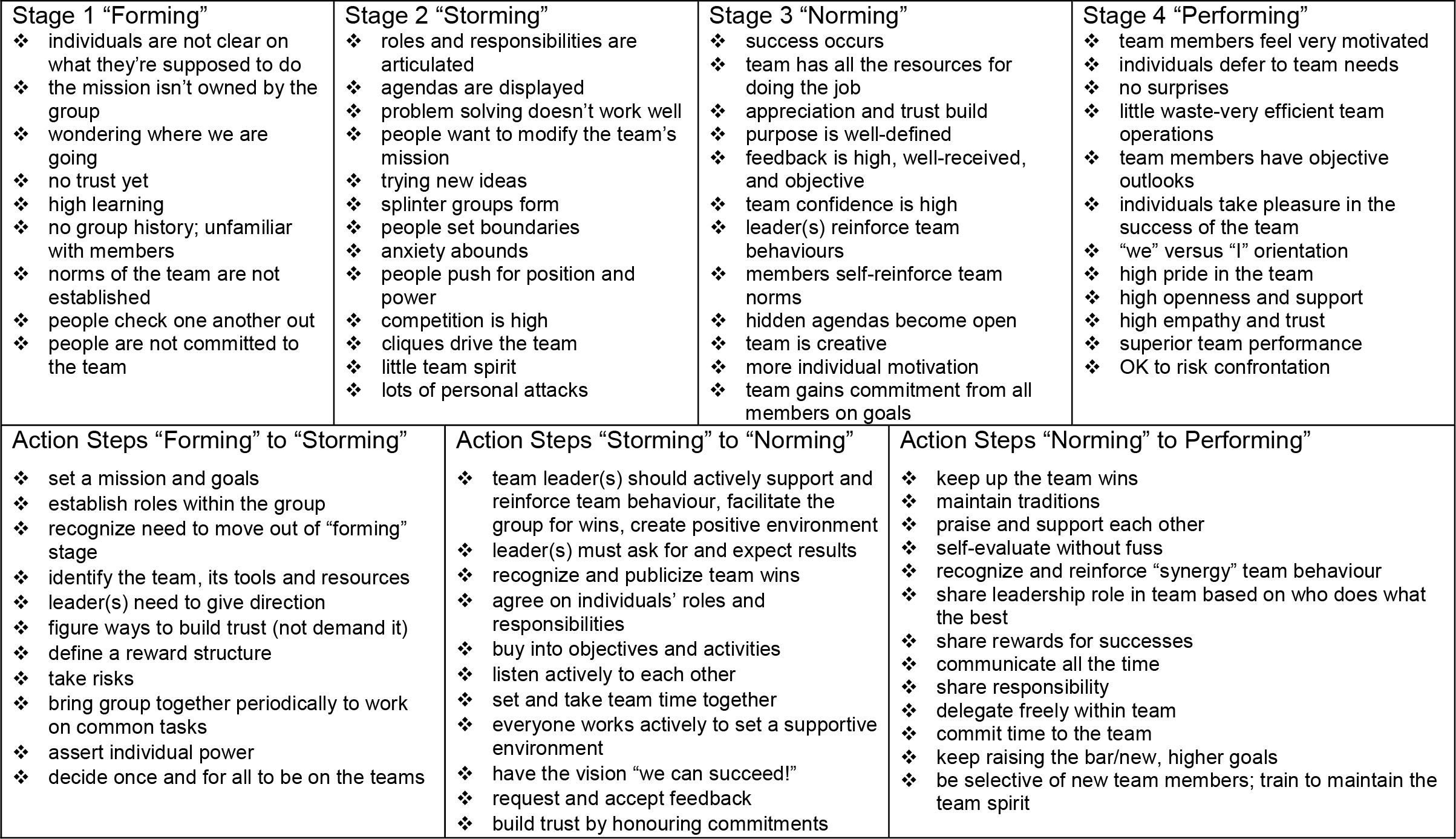2.4 Progressing Through the Stages of Team Development
As your group moves through these stages, stay aware of the patterns that tend to occur at each stage. For example, many teams falsely assume that their group cannot function when they find themselves at the storming stage. However, this stage is a normal part of team development, like the others. The infographic below indicates what steps you and your group members can take together to move to the next stage in your work together. Ultimately, you want to achieve a performing team that supports your learning in community.
Image Credit: Alice Macpherson
Now that you have reviewed the ways that a team can move on in their development, apply your knowledge to team dilemmas in the quiz below. When you have finished the quiz, go to the next chapter to move on in the workshop.


